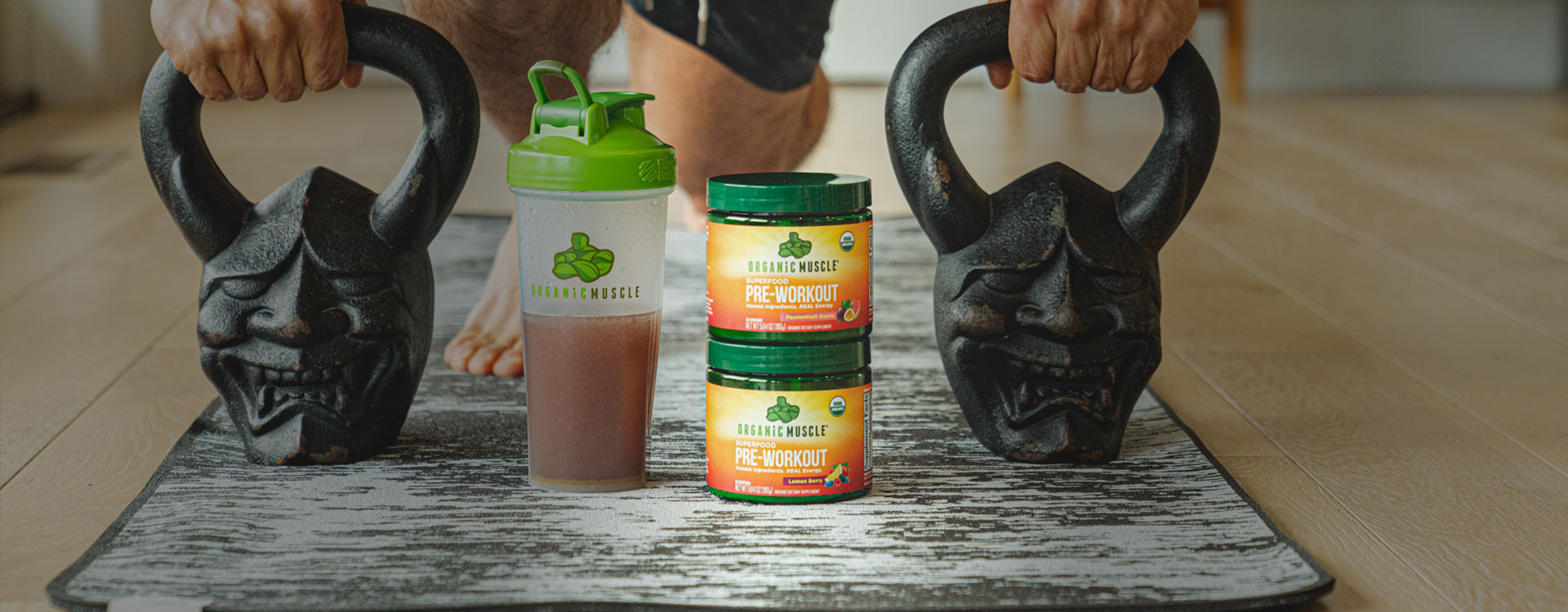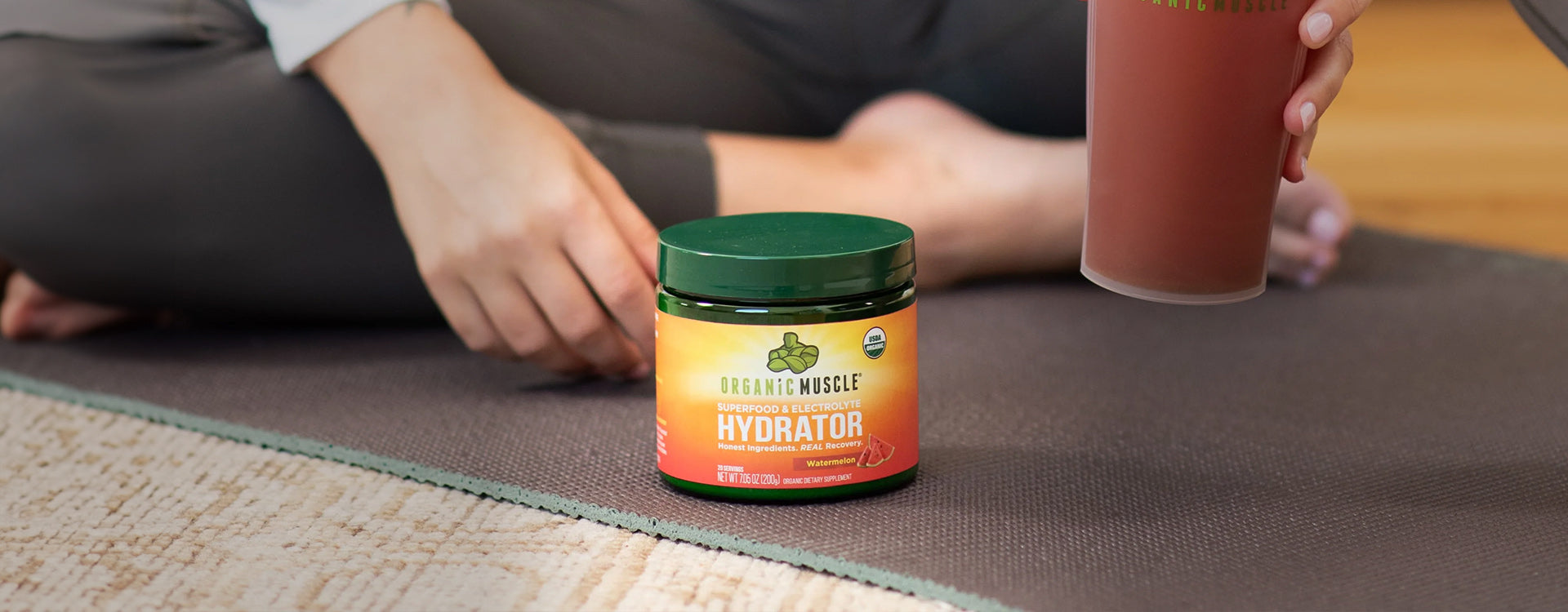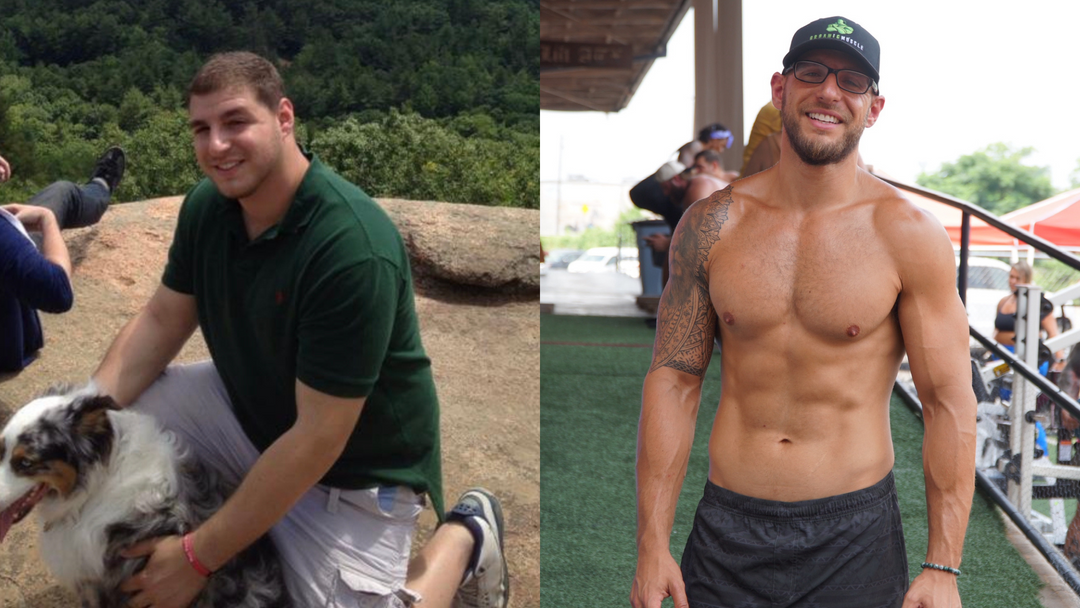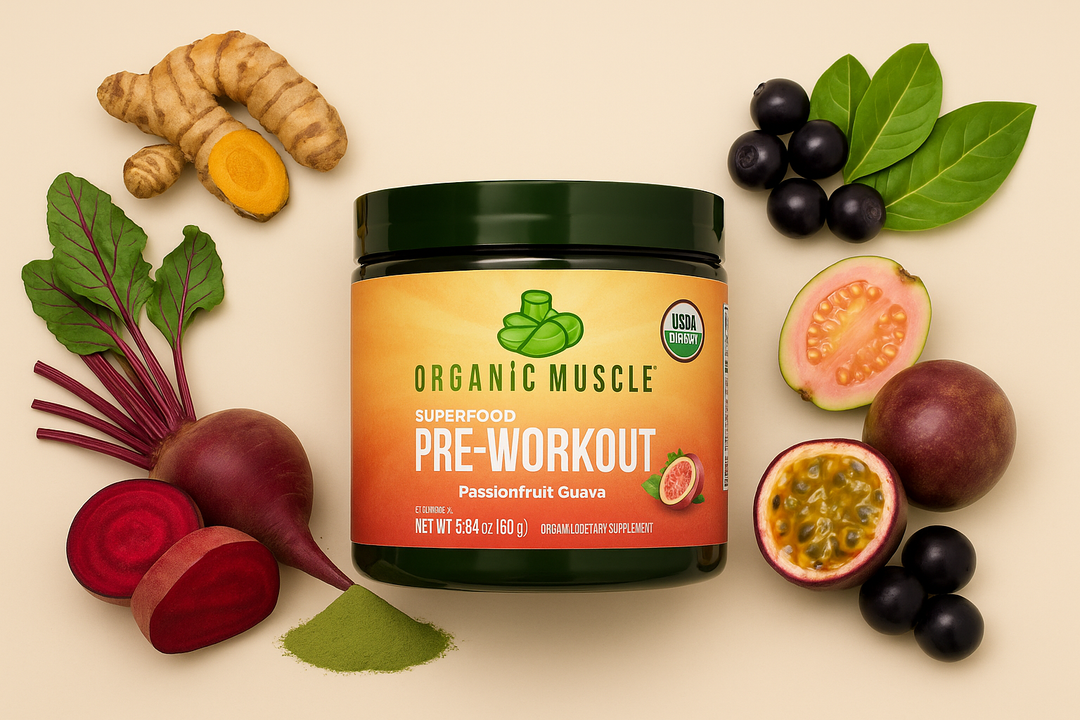Key Takeaways:
- Target the Right Muscles: Focus on the Biceps Brachii and Brachialis for comprehensive arm development and aesthetic appeal.
- Warm-Up is Key: Always incorporate a proper warm-up to enhance performance and reduce injury risk before your bicep workouts.
- Avoid Common Mistakes: To ensure balanced and effective training, avoid pitfalls like skipping warm-ups, overtraining, and neglecting other muscle groups.
Are you ready to take your arm training to the next level? Well-defined, strong biceps are a sign of hard work and play a crucial role in overall upper body strength and aesthetics. Whether you’re looking to impress at the gym, improve your performance in other lifts, or achieve a more sculpted physique, focusing on effective bicep workouts is essential.
In this article, we’ll explore the 10 best bicep workouts specifically designed to promote muscle growth and enhance strength. From classic curls to innovative variations, these exercises will help you target the biceps from multiple angles for optimal development. You’ll also find tips on proper form, recommended sets and reps, and how to incorporate these moves into your training routine. Get ready to build bigger, stronger arms that turn heads!
Essential Bicep Anatomy: The Muscles You're Targeting
Understanding the anatomy of the bicep muscles is crucial before diving into the top bicep workouts. This knowledge will not only help you target your workouts more effectively but also allow you to appreciate the complex journey toward stronger, bigger arms. The bicep muscle group is intricately involved in both the function and aesthetics of the upper arm, playing a pivotal role in various arm movements.
The bicep group comprises two main muscles: the Biceps Brachii and the Brachialis.1
- Biceps Brachii: This is the most well-known muscle and consists of two heads—the long head and the short head. The Biceps Brachii is primarily responsible for arm flexion, forearm supination (rotating the forearm to turn the palm up), and shoulder elevation.1 Working both heads of the Biceps Brachii is essential for achieving both mass and definition, giving the bicep its characteristic bulge.
- Brachialis: Although not as visible as the Biceps Brachii, the Brachialis plays a critical role in overall bicep development. Located beneath the Biceps Brachii, it assists in elbow flexion.1 Targeting the Brachialis can significantly enhance the overall size of the arm, pushing the Biceps Brachii up and out, making it appear larger.
Incorporating a variety of bicep workouts that target both of these muscles is key to achieving optimal growth and strength. It’s not just about the aesthetic appeal but also about enhancing functionality and overall arm strength. Understanding the role of each muscle within the bicep group can guide your training regimen, enabling you to select exercises that ensure a comprehensive approach to bicep development.
Creating A Strong Foundation: Warming Up Before Your Bicep Workout
Before diving into the best bicep workouts for bigger, stronger arms, it's crucial to understand the importance of a proper warm-up. A well-structured warm-up prepares your muscles for the intense activity ahead and significantly reduces the risk of injury, ensuring that your fitness journey is effective and safe.
The Role of Warm-Up in Bicep Workouts
Warming up serves multiple purposes. It increases blood flow to the muscles, raises body temperature, and enhances muscle elasticity — all of which contribute to a more efficient and safer workout.2 Regarding bicep workouts, specifically, a targeted warm-up ensures that your elbow joints and the muscles supporting your biceps are ready to handle the weights and repetitions you're about to undertake.
Effective Warm-Up Strategies
- Dynamic Stretching: Unlike static stretching, dynamic stretches involve movement and are ideal for warming up. Examples include arm circles, wrist rotations, and gentle arm swings. These exercises improve the range of motion and prepare your body for the workout.
- Light Cardio: A short session of light cardio, such as jogging in place or jumping jacks, can elevate your heart rate and improve blood circulation to the muscles,3 including the biceps.
- Activation Exercises: Activation exercises specifically target the muscle groups you'll work on during your workout. Try doing a few light sets of dumbbell curls or resistance band curls for the biceps. This primes your biceps for the heavier lifting to come.
- Mind-Muscle Connection: Focus on the muscle group you plan to train. Visualizing the workout and the muscles involved can enhance your connection to the workout, leading to more effective muscle engagement and growth.
Why Bicep Workouts Matter: Understanding Their Importance
Biceps, often the centerpiece of upper body development, play a pivotal role in various athletic endeavors and daily activities. Strong biceps not only enhance overall upper body strength but also contribute to improved performance in sports requiring upper body power and coordination. Here's why bicep workouts are indispensable:
- Enhanced Upper Body Strength: Strong biceps work synergistically with other upper body muscles, such as the shoulders and triceps, to provide comprehensive strength and stability.
- Improved Athletic Performance: Well-developed biceps can significantly enhance athletic abilities in sports demanding upper body power and coordination.
- Enhanced Functional Strength: Bicep strength is crucial for everyday tasks, from carrying groceries to opening jars.
- Improved Aesthetics: Having well-defined biceps is a desirable aesthetic goal for many individuals.
10 Best Bicep Workouts For Bigger, Stronger Arms: Detailed Breakdown
Here’s a detailed guide to the 10 best bicep exercises for anyone looking to pack on muscle and increase strength.
Barbell Curl
- Why it works: The barbell curl is a fundamental movement that allows for heavy loading, hitting both the long and short heads of the biceps.
- How to do it: Stand with your feet shoulder-width apart, hold a barbell with an underhand grip, and curl the weight up while keeping your elbows locked in place.
- Pro tip: Avoid swinging your body to maximize bicep engagement.
Alternating Dumbbell Curl
- Why it works: This exercise allows for unilateral training, correcting strength imbalances between arms while promoting a full range of motion.
- How to do it: Hold a dumbbell in each hand, curl one dumbbell at a time, focus on control, and squeeze at the top.
- Pro tip: Supinate your wrist (rotate the palm upwards) as you curl to maximize the contraction of the biceps.
Hammer Curl
- Why it works: The hammer curl targets the brachialis and brachioradialis muscles, contributing to arm thickness and overall size.
- How to do it: Hold the dumbbells with a neutral grip (palms facing your body) and curl the weights without twisting your wrists.
- Pro tip: This variation strengthens your forearms, giving a balanced, full-arm workout.
Concentration Curl
- Why it works: By isolating one arm at a time, the concentration curl minimizes cheating and ensures you focus all your effort on the bicep.
- How to do it: Sit on a bench, place your elbow against the inside of your thigh, and curl the dumbbell slowly for maximum tension.
- Pro tip: Pause at the top for 1-2 seconds to squeeze the bicep before lowering the weight.
Preacher Curl
- Why it works: The preacher curl locks your arms into place, preventing your shoulders or back from assisting, forcing your biceps to handle the full load.
- How to do it: Using a preacher bench, grip a barbell or EZ bar, and curl with controlled movement, focusing on the negative (lowering) portion of the rep.
- Pro tip: Keep constant tension throughout the movement, especially on the way down.
Cable Curl
- Why it works: Cables offer continuous tension throughout the range of motion, making them a great addition to muscle growth.
- How to do it: Attach a straight bar or rope to a cable machine, hold it with an underhand grip, and curl while keeping your elbows fixed at your sides.
- Pro tip: Vary the attachment (straight bar, EZ bar, or rope) to hit different bicep areas.
Incline Dumbbell Curl
- Why it works: The incline position stretches the long head of the bicep, emphasizing its development and increasing the overall range of motion.
- How to do it: Sit on an incline bench with dumbbells in each hand, allowing your arms to hang at your sides. Curl both dumbbells simultaneously, squeezing at the top.
- Pro tip: Use lighter weights for better control and a deeper stretch at the bottom of each rep.
Chin-Up
- Why it works: Chin-ups are an underrated bicep exercise that recruits significant muscle fibers due to the bodyweight load.
- How to do it: Grip a pull-up bar with your palms facing toward you (underhand grip) and pull your body up, focusing on using your biceps to lift.
- Pro tip: Add weight using a belt to increase resistance as you get stronger.
Zottman Curl
- Why it works: The Zottman curl combines a regular curl with a reverse curl, training both the biceps and forearms in one motion.
- How to do it: Curl a pair of dumbbells with your palms facing up. At the top of the movement, rotate your wrists so your palms face down, and lower the weights in this position.
- Pro tip: Focus on the lowering (eccentric) phase to fully engage your forearms and build overall arm strength.
10. 21s (Half and Full Range Curls)
- Why it works: 21s are a brutal but effective technique for exhausting the biceps and promoting muscle growth by working different parts of the range of motion.
- How to do it: Perform 7 reps from the bottom of the curl to halfway, 7 from halfway to the top, and 7 full-range curls to finish the set.
- Pro tip: Use this as a finisher to completely fatigue the biceps after a strength-focused workout.
How To Choose The Best Bicep Exercises For Your Fitness Goals
The vast array of bicep workouts available can be overwhelming when embarking on a journey to sculpt bigger, stronger arms. It's essential to select exercises that align with your fitness goals, current level of strength, and any limitations you may have. Here's how to fine-tune your selection for optimal results.
Understand Your Starting Point
Assessing your current strength and fitness level is crucial. Beginners might benefit from simpler, foundational movements focusing on form and technique before advancing to more complex exercises. Meanwhile, those with more experience can explore variations and incorporate equipment to intensify their workouts.
Define Your Goals
Are you aiming to increase muscle size, enhance strength, improve endurance, or combine these? Different exercises and training modalities cater to various objectives:
- For Muscle Size (Hypertrophy): Focus on exercises that allow for higher volume (more sets and reps) with moderate to heavy weights. This approach is crucial for stimulating muscle growth.
- For Strength: Incorporating compound exercises that target the biceps and surrounding muscles can significantly increase overall arm strength.
- For Endurance: Opt for lighter weights but higher repetitions. This will enhance your muscle stamina over time.
Balance Your Routine
A well-rounded routine encompasses both the biceps, triceps, and forearms for balanced arm development. Ensure you're not overtraining one area, as this could lead to imbalances and potentially increase the risk of injury.
Listen to Your Body
Pay attention to how your body responds to different exercises. If you experience pain (beyond typical muscle fatigue), consider modifying the exercise or consulting with a fitness professional to ensure your technique is correct.
Incorporate Variety
Varying your bicep workouts prevents plateauing and keeps the muscle fibers guessing, which can lead to better muscle growth and development. Experiment with dumbbells, barbells, resistance bands, and cable machines to introduce new challenges over time.
Leverage High-Quality Nutrition
Pairing your workout routine with superior nutrition is the key to unlocking your full potential. Opt for clean, certified organic supplements without harmful chemicals and preservatives to fuel your body with the necessary nutrients.
With Organic Muscle, you're not just investing in fitness — you're investing in holistic wellness. Embrace the comprehensive approach to achieving your fitness goals, ensuring every rep is powered by the highest quality, safety, and efficacy standards.
Common Bicep Workout Mistakes: Avoid These Pitfalls
While embarking on your journey to achieve stronger, bigger arms through bicep workouts, you must know common pitfalls that can hinder your progress or even cause injury. By understanding these errors, you can ensure your efforts are efficient, safe, and aligned with our value proposition of promoting holistic wellness.
Skipping Warm-Up
Neglecting to warm up is a widespread mistake that can lead to muscle strains and injuries. A proper warm-up increases muscle blood flow, enhancing flexibility and readiness for resistance training. Start with light cardio or dynamic stretches targeting the arms and shoulders to prepare your biceps for the workload ahead.
Overtraining the Biceps
Many enthusiasts believe that more is always better. However, overtraining your biceps without allowing adequate recovery can lead to muscle fatigue, hinder growth, and even result in overuse injuries. Remember, muscles grow during rest, not during the workout.
Lifting Too Heavy, Too Soon
While progressing to heavier weights is essential for growth, doing so prematurely can lead to improper form, diminish the exercise's effectiveness, and increase injury risk. Gradually increase the weight you lift only when you can complete your exercise sets while maintaining proper form.
Neglecting Full Range of Motion
Performing bicep curls or other exercises with a partial range of motion can limit muscle growth and strength gains. Full extension and contraction of the biceps during each rep ensure maximum muscle fiber engagement, which is vital for holistic muscle development.
Ignoring Other Muscle Groups
Focusing solely on bicep workouts can lead to imbalances that may affect posture and overall arm aesthetics. For balanced arm development and to prevent injuries, incorporate exercises targeting the triceps, shoulders, and back.
Inconsistent Training
Consistency is key in any fitness regimen. Irregular workouts or frequently changing your routine without strategic planning can impede your progress towards stronger, larger biceps. Set a realistic and sustainable schedule, and stick to it for optimal results.
Stay Motivated And Consistent: Tips For Long-Term Success
Here are some invaluable tips to keep you motivated and consistent in your fitness pursuits:
Set Realistic Goals
Begin with clear, achievable goals. Whether it's increasing your bicep size by a certain measurement or being able to perform a specific number of reps at a higher weight, setting realistic goals provides you with tangible targets to hit. This approach keeps you focused and allows for celebratory milestones, fueling further motivation.
Track Your Progress
Documenting your journey is crucial. Use a journal or a digital app to note your workout routines, weights lifted, and progress photos. Observing improvements over time is a powerful motivator and helps fine-tune your approach based on what’s working and what isn’t.
Embrace Variety
Diversify your bicep workouts to avoid hitting a plateau. Alternating between exercises keeps the muscles guessing and challenged, promoting growth and strength gains. Incorporate a mix of curls, hammers, and lifts to target the biceps from different angles.
Partner Up
Having a workout buddy or a community can greatly enhance your commitment. Sharing fitness journeys with others provides a sense of camaraderie, making the process enjoyable and holding you accountable. You'll find extra motivation when you feel less inclined to hit the gym.
Keep Learning
The fitness industry is ever-evolving, with new research and techniques continually emerging. Stay informed about the latest in fitness and nutrition to optimize your approach to bicep workouts continually. Resources like workshops, podcasts, or articles can provide new insights and inspiration.
Remember, the journey to bigger, stronger arms is a marathon, not a sprint. By staying motivated, and adopting a holistic approach to wellness, you'll achieve your fitness goals and enhance your overall health and well-being.
Final Thoughts
These 10 best bicep workouts are a powerhouse for those looking to enhance their arm strength and achieve bigger biceps. Incorporating various exercises, from the classic curl variations to the more dynamic compound movements, ensures a comprehensive approach to bicep development. Remember, consistency is key, and technique and listening to your body to avoid injury.
At Organic Muscle, we understand that your fitness journey is deeply intertwined with your overall health and wellness. That's why our range of Certified Organic, non-GMO, Vegan, Gluten-Free, Keto-Friendly, and Dairy-Free supplements is designed to complement your efforts in the gym, providing you with the clean, high-quality fuel your body needs to recover and grow stronger. As you push your limits with these bicep workouts, consider integrating our products into your routine to simultaneously optimize your results and health.
Read also:
- 10 Best Arm Workouts To Build Lean, Defined Muscles
- 10 Best Leg Workouts For Runners To Boost Endurance
- Best Glute Workouts For A Stronger, Rounder Booty
Frequently Asked Questions About 10 Best Bicep Workouts For Bigger, Stronger Arms
How often should I train my biceps for growth?
Aim to work out your biceps 2-3 times per week to optimize bicep growth. This frequency allows for adequate muscle growth stimulus while providing sufficient recovery time between sessions. Remember, muscle growth occurs outside the gym during rest periods, making recovery as important as the workouts.
Is it necessary to use heavy weights for bicep workouts?
No, using heavy weights for bicep growth is not strictly necessary. The key to muscle growth is muscle tension, which can be achieved with lighter weights and higher repetitions as long as you push your muscles to fatigue. However, incorporating a mix of both heavy (lower reps) and lighter (higher reps) weights can maximize muscle growth and strength.
How many sets and reps should I do for bigger biceps?
A good rule of thumb for bicep workouts is to aim for 3-5 sets of 8-12 reps. This rep range is ideal for hypertrophy (muscle growth). It allows for a significant enough load to challenge the muscles while still enabling the completion of multiple sets with proper form.
Are barbell curls better than dumbbell curls?
Neither is inherently better than the other; both barbell curls and dumbbell curls are excellent exercises for bicep growth. The key difference is in variation and muscle activation. Dumbbell curls allow for more natural movement and can help correct muscle imbalances, whereas barbell curls enable you to lift heavier weights and effectively target both biceps simultaneously.
How can I ensure I'm working both heads of the bicep?
Incorporate a variety of exercises in your workout routine to work both the long head and the short head of the biceps. Exercises that involve shoulder flexion, like incline dumbbell curls, better target the long head, while movements where your arms are in front of your body, such as preacher curls, emphasize the short head. A mix of curl variations will ensure comprehensive bicep development.
What other muscle groups should I work with biceps?
For balanced arm development and overall symmetry, focusing on the triceps and forearms is important. Compound exercises such as push-ups, bench presses, and rows can help work the biceps indirectly while targeting these other essential muscle groups for stronger, more aesthetically pleasing arms. Additionally, don't overlook the importance of working the shoulders and back to support upper body strength and improve posture.
Sources:
- Tiwana, M. S., Charlick, M., & Varacallo, M. (2020, August 30). Anatomy, Shoulder and Upper Limb, Biceps Muscle. PubMed; StatPearls Publishing. https://www.ncbi.nlm.nih.gov/books/NBK519538/
- American Heart Association. (2014, September 1). Warm Up, Cool Down. Www.heart.org. https://www.heart.org/en/healthy-living/fitness/fitness-basics/warm-up-cool-down
- Cronkleton, E. (2020, March 30). Running In Place: Benefits, Cautions, and More. Healthline. https://www.healthline.com/health/fitness-exercise/running-in-place
|
Disclaimer: Organic Muscle products are not intended to treat, diagnose, mitigate, prevent, or cure disease. Organic Muscle products should not replace prescribed medications or the variety of foods important to a healthful diet. |














